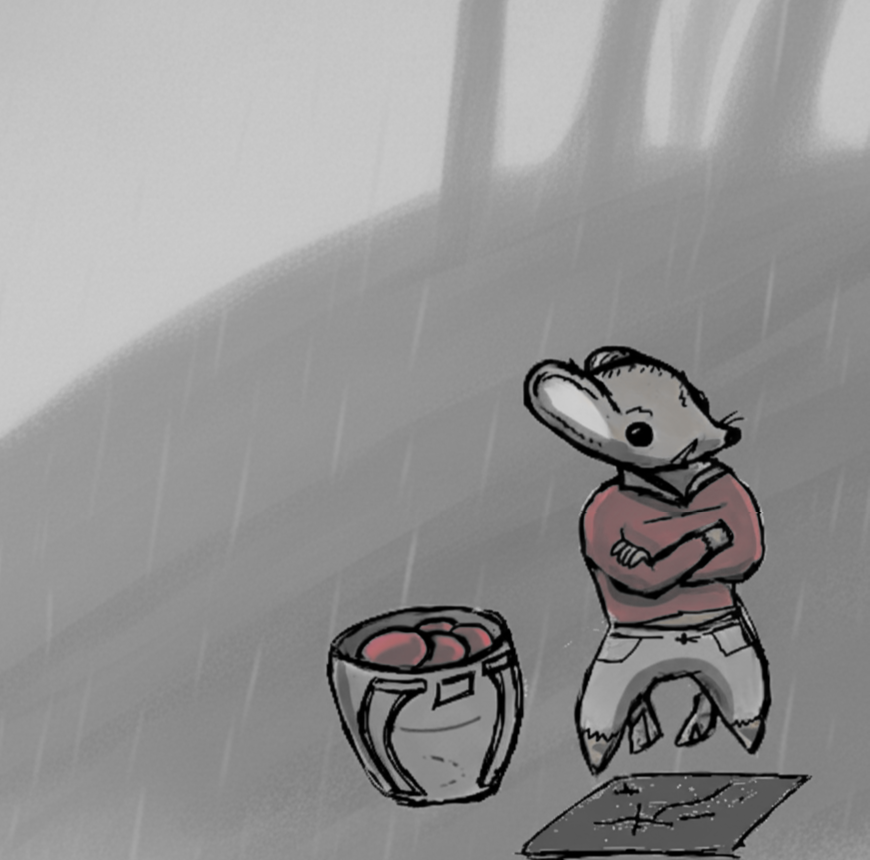-
To Make a Mouse
Wanting a creativity-assist when I was writing up NPCs to populate the town of Big Lick, I decided to write up a Python based tool to generate mouse-names suitable to my setting–mostly Appalachian plant names of one sort of another–and to try to come up with prompts to think about their dispositions, what sorts of…
-

Spooked in the Hollers
Deep in the mountains of Appalachia, brave mice venture forth down into the hollows, where the water stands dark, the trees and reeds grow tall, and danger lurks in the rising fog. We ain’t there yet, but we’re pushin’on, crafting a world full of misty ridges, perilous creekside burrows, dark wet caves… stories born straight…
-

Happy Holidays!
Wishing everyone happy holidays and a merry new year from the Hexbrawler twins.
-

To Sneezweed, or Not to Sneezweed?
Fun, or not fun? This is an herb that can be foraged in certain hexes of The Hollers , the Mauritter hexcrawl we are developing based in a mythological Appalacha setting. Traditionally, Sneezweed, is a snuff that was used in some places in Appalachia to induce sneezing to rid one of evil spirits or disease…
-
Gary Con XVII
Hexbrawler Games will be at Gary Con XVII! Updates on what we’ll be doing will be posted here: https://hexbrawler.com/gary-con-xvii-info/
-

Symbolic Play
The old text based pc adventure games: They would tell you the basics, what you see in a room, but you’d have to interrogate the game to find out a key was hidden beneath the lamp. There was no ‘roll a perception check.’ That kind of play requires more effort, but it also more evocative…
-

HexBrawlers Making Portals
Work has been especially busy lately, but we’ve been busy outside of our blog designing custom assets for mapping in Dungeondraft. Not an artist, but its been fun pretending to be with a Wacom tablet and Krita, and we are focusing on more of an old-school mapping stye. Tonight I was making portals: i.e. doors.…
-

ChatGPT Lets Me be the Dungeon Master
@ There’s been lots of talk about how chatgpt might serve as a dungeon master. However, DMs also tend to be the most obsessed with the game, and can sometimes have trouble finding willing players. Perhaps instead, chatgpt will replace players for DMs who want to play more or play-test an adventure. So I decided…
-

There is no perfect campaign, just the campaign you made. And its perfect.
I love reading posts about TTRPG theory. Its akin to watching an artist straining to draw the perfect curve, seeking perfection, supreme beauty. But all we really have are the moments we share with our friends, the gift of seeing our friends enjoy what we created, even if it is only a tenth of the…
-

Tools in the Toolbox Part 2: An Illustration from The Mandalorian
In my last blog post, I introduced Mary Douglas’s culture theory of grid and group as a potential world-building tool, but I never really gave an example of how you might use it to not only create more convincing, coherent cultural worlds, but to clarify the sorts of conflicts and tensions that might naturally arise…
Got any book recommendations?
